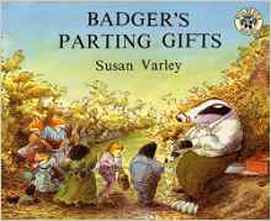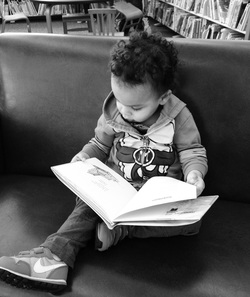As you can see from Anna's post there are many benefits to reading nursery rhymes to your child. I want to elaborate on one particular benefit which is number 6 on Anna's list: Listening to Nursery Rhymes builds vocabulary.
In a previous post, I discussed the different tiers of vocabulary. Three Tiers of Vocabulary Educator and author of Bringing Words to Life, Isabel Beck, has categorized all words into three tiers. Tier I -Most basic words -Rarely require instruction in school -Examples: clock, baby, happy Tier II -Words that are high frequency for mature language users and are found across a variety of domains -Not so common in everyday language -Instruction adds productivity to an individual’s ability -Examples: coincidence, absurd, industrious Tier III -Words whose frequency of use is quite low and is often limited to specific domains -Best learned when needed in a content area -Examples: isotope, lathe, peninsula Therefore, when teaching vocabulary, it makes the most sense to teach Tier II words. I want to illustrate just how many tier II words your child can easily hear and learn just by repeating and reading nursery rhymes. Below are common nursery rhymes in which I've highlighted the tier II vocabulary. Hickory Dickory Dock, the mouse ran up the clock. The clock struck one, the mouse ran down, Hickory dickory dock! Jack and Jill went up a hill to fetch a pail of water. Jack fell down and broke his crown and Jill came tumbling after. Little Miss Muffet, sat on a tuffet, eating her curds and whey. Along came a spider, who sat down beside her and frightened Miss Muffet away. Pussycat, pussycat, where have you been? I've been to London to visit the Queen. Pussycat, pussy, what did you do there? I frightened a little mouse under the chair. Twinkle, twinkle little star, how I wonder what you are. Up above the world so high. Like a Diamond in the sky. Twinkle twinkle little star, how I wonder what you are. Jack be nimble, Jack be quick, Jack jump over the candlestick. As you can see, there are tons of vocabulary words that your children can be exposed to. You might be wondering why I only highlighted some words but not others. It's important to keep in mind that tier II words are ones that are not specific to a content area and are seen frequently in books and literature. There are different levels of tier II words as well ranging from very frequent to less frequent. I'm sure many can be argued that some may be specific to a content area or some may be too simplistic. For example, the word "quick" may be considered a tier I word. However, I imagine that parents might use the word "fast" before they say "quick." When using vocabulary with your child, start using synonyms when you are describing something. "Wow you ran very fast. You are very quick!" You can also see how a lot of the language used above may spark conversations with your child beyond the tier II vocabulary. For example: Where is London? What are curds and whey? Also Twinkle Twinkle little star contains a simile: like a diamond in the sky. The other thing to keep in mind, is that if your child has background knowledge of nursery rhymes (and fairy tales) it will help them tremendously when they get into school. Often nursery rhymes and fairy tales will be referred to in other stories or on tests. Or they may have to compare and contrast an original with a twisted or fractured version. And not knowing the original versions puts kids at a huge disadvantage. Nursery rhymes may seem small and simplistic, but the benefits they offer to your child's education are endless. Goodness, I can't believe our Middle Grade Mastery course is coming to an end. It's been quite the extraordinary adventure with students learning to make magic with their ideas and manuscripts and sharing their journeys and processes with us and each other! We've had a bonus illustrating middle grade books section each week and for Week 4 we look at Photoshop, including covers in your portfolio, and creating your own cover if you are writing and illustrating your novel. I thought this video might be helpful for folks here as the principles apply to picture books or whatever genre you are illustrating. Plus it's neat info to know. Because nearly all the books I shared didn't have jackets, I didn't talk about wrap around jackets. This is where there's a separate cover with a hard bound book that wraps around. The front flap will often have a pitch or something enticing about the book or even a quote, while the back will have enticing bios about the author and illustrator. So who's up for taking a peek at the 12 minute bio and letting us know what you think in the comments?  Today's post is a strange one. It's my brother-in-laws birthday and he is actively dying a pretty horrible death. His mom, my exquisite 90 year old mom-in-law, and I have been his main care-givers and it's been really challenging. I've been around other deaths but none as difficult as this. Morphine helps but his will to keep breathing makes for lots of wheezing and coughing and awful sounds in trying to get air in. No-one shows this kind of death in movies and I don't think that this kind of death is the subject for young children but there are some great books for kids about death, such as the many great titles on this list. My favorite is Badger's Parting Gifts, which is truly wonderful on so many levels. Sustenance in Teaching Right now I'm co-teaching a now-closed for 2016 Middle Grade course with the awesome Hillary Homzie with beautiful, soulful, super smart talented and fun students. Hillary and I love working with each other, making each other better teachers and better writers while helping our students who help us with the exact same things. At the same time we all support and nurture each other in a myriad of ways. Hill and I were talking about our excitement at knowing that students from this course will be getting published and how magic the whole process is for us being a part of that. Then I got a Facebook post from Miri Leshem-pelly in Israel who took our Craft and Biz of Writing Picture Books course coming up in May and just got a contract. Here it is verbatim, "Dear Mira Reisberg, I wanted to share with you the exciting news that I've just signed a contract with Kane Miller Publishing for the picture book that I wrote during your wonderful course at the Children Book Academy! Thank you so much for helping me on my way to publication." Wow, talk about being nurtured and sustained. This makes 81 contracts for former students which feels pretty phenomenal. So right now I feel that I'm holding and being held and even though life can be really hard at times, there's tons of beauty and joy that I am very grateful to be a part of. So I'd like to switch gears and share a blog post from one of our current students and former scholarship recipients Kara Stewart. I don't normally do this but as we get up to 80 thousand views per month (even though most of the readers don't comment :( I wanted to help her have a wider platform, It's a really important post that may be difficult for some to read but I hope that you read it anyway and please share it. I'm just going to share the beginning to give context: Writing About Native Americans by Kara Stewart Today's post is lengthy. I created it first not as a blog post, but as an addition to the online MG writing course I am currently taking through the Children's Book Academy. I noticed that a number of writers in the course with me had some form of American Indian content in their books or planned books. To address that, I wrote the following guest post, which I hope will be sent out with the other course materials. I'd love it if Mira Reisberg would use it as a part of all of her courses going forward. She has a wonderful opportunity to educate writers on diversity as part of their craft education. I would also love it if agents and editors would seriously consider these points when evaluating manuscripts. Here's the link to read the rest of this powerful post! And of course I will. We already discuss diversity as part of all our interactive courses, especially in the webinars but I will make sure to include this link from here on in. Award-winning creative, Dr. Mira Reisberg, has worn just about every hat in the industry including: art director, editor, best-selling illustrator and author, kid lit university professor, and literary agent. Mira holds a PhD in Education and Cultural Studies with a focus on children's literature. Her mission is to help make the world a better place through children's literature and joy.
|
We are so excited to be mixing things up at CBA, beginning with some delicious additions to the Blogfish. Meet our awesome bloggers!!
Here's our lineup: 1st Mondays begin with former school psychologist Dr. Debra Collins who will be writing about Social emotional Learning in kidlit and behind the scenes as well as Jewish children's books. 2nd Mondays will feature super smart Melissa Stoller whose career is taking off with several new books. 3rd Mondays will feature our new blogger coming soon. 4th Mondays features new blogger, the fabulous Brentom Jackson, who has a beautiful approach to blogging. And 5th Mondays we'll be taking a break Archives
July 2024
|
|
Discover
|
About Us
|
Join Us
Join our Community and receive a fabulous free gift, KidLit tips, newsletters, scholarship info, contests, and more!
Join our KidLit Mentorship |
Social Media
Interact with our FaceBook Group or follow us on:
|
© 2010-2024 All content on this website is copyrighted. Sorry, all courses are non-refundable.

 RSS Feed
RSS Feed
